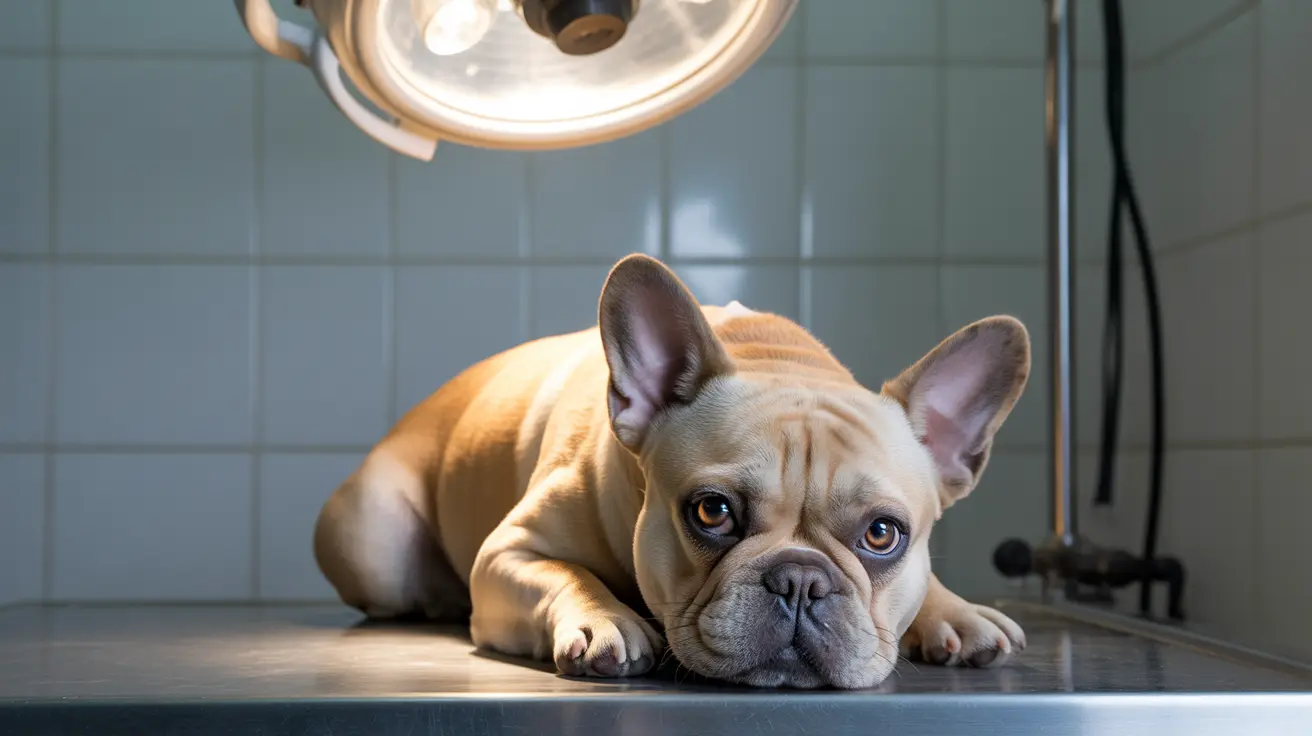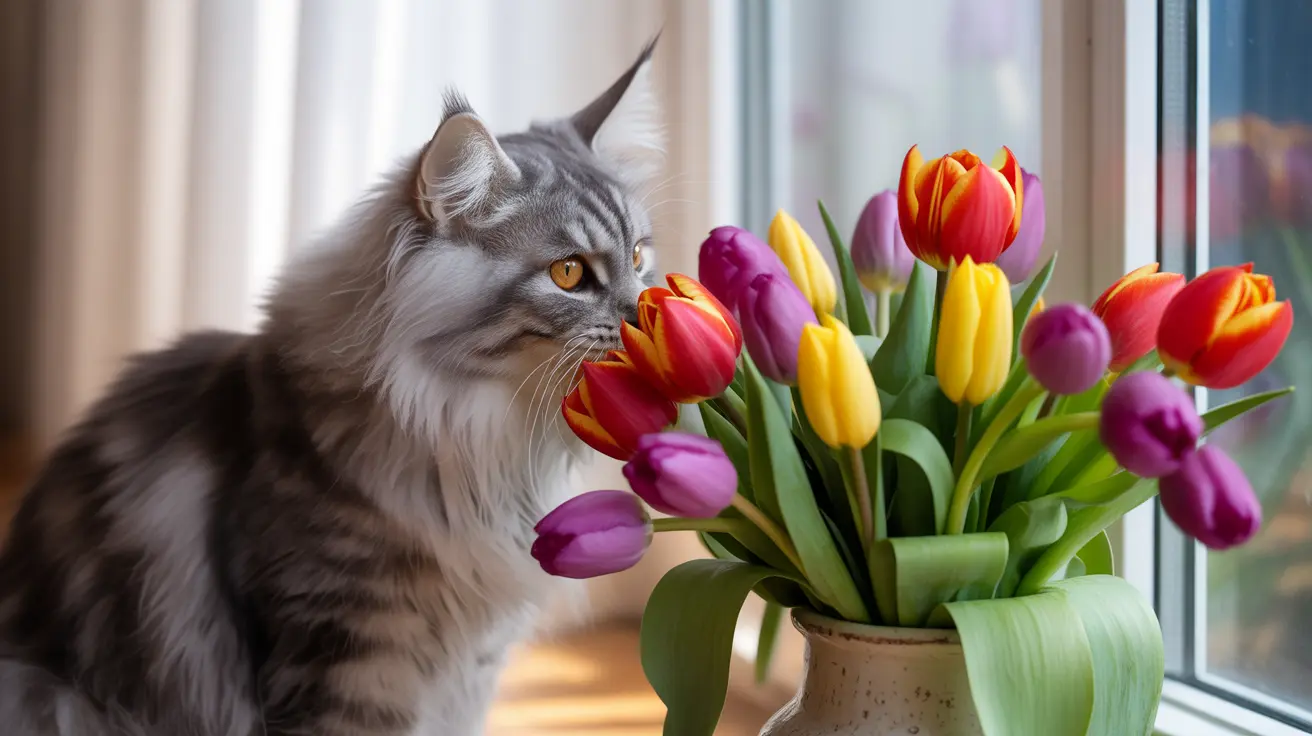Brachycephaly in Dogs, Cats, and Rabbits: Understanding the Health Risks of Flat-Faced Pets
Brachycephaly in dogs, cats, and rabbits has become increasingly common as pet owners gravitate toward breeds with adorable flat faces and large, expressive eyes. However, this appealing "baby-like" appearance comes at a significant cost to animal welfare. The term "brachycephaly," derived from Ancient Greek meaning "short head," describes a skull shape that is intentionally shorter than average, resulting from selective breeding practices that prioritize cosmetic traits over health.
This comprehensive guide explores the serious health implications of brachycephaly across different pet species, from the breathing difficulties that plague French Bulldogs to the dental problems affecting flat-faced rabbits. Understanding these conditions is crucial for current pet owners, prospective buyers, and anyone involved in animal welfare, as the popularity of brachycephalic breeds continues to rise despite mounting evidence of their compromised quality of life.
By examining the anatomical changes, health complications, and ethical considerations surrounding brachycephaly, we can make more informed decisions about pet ownership and advocate for breeding practices that prioritize animal welfare over aesthetic preferences.
Understanding Brachycephaly: The Science Behind Short Skulls
Brachycephaly refers to a skull configuration characterized by a high cephalic index and significantly shortened skull length relative to width. This anatomical feature creates the distinctive flat-faced appearance seen in popular breeds like Pugs, Bulldogs, Persian cats, and certain rabbit varieties. The condition represents a dramatic departure from the natural skull proportions found in wild ancestors of these domesticated animals.
The shortened skull structure affects multiple anatomical systems simultaneously. When breeders select for increasingly flat faces, they compress the entire respiratory tract, dental structures, and surrounding soft tissues into a smaller space. This compression creates a cascade of health problems that extend far beyond simple breathing difficulties, affecting everything from temperature regulation to digestive function.
The Anatomical Changes in Brachycephalic Animals
The most significant anatomical changes in brachycephalic animals involve the upper respiratory tract. Stenotic nares, or abnormally narrow nostrils, represent one of the primary features, dramatically reducing airflow capacity. The soft palate becomes elongated relative to the shortened skull, creating excess tissue that obstructs the tracheal entrance during breathing.
Additional structural abnormalities include everted laryngeal saccules, where small folds of tissue turn outward and block airflow, and in severe cases, complete laryngeal collapse occurs when cartilage structures fail to maintain proper airway support. The trachea itself may be hypoplastic, meaning it develops as abnormally narrow, further restricting breathing capacity. Extended nasopharyngeal turbinates can completely obstruct nasal airflow, forcing affected animals to breathe primarily through their mouths.
Brachycephalic Dog Breeds: Popular but Problematic
The list of popular brachycephalic dog breeds includes some of the most beloved companions in modern households. English Bulldogs, French Bulldogs, Pugs, Boston Terriers, Boxers, Shih Tzus, Pekingese, Cavalier King Charles Spaniels, Bullmastiffs, Brussels Griffons, Chow Chows, Lhasa Apsos, and Japanese Chin all display varying degrees of brachycephalic features. These breeds have been selectively bred to emphasize their flat faces, large eyes, and wrinkled features that many find irresistibly cute.
However, the health consequences for these dogs are severe and often lifelong. Brachycephalic dogs commonly develop underbites due to jaw malformation, experience chronic obstructive breathing that worsens with exercise or heat exposure, and suffer from skin fold infections in their facial wrinkles. The impaired panting efficiency caused by their compressed airways makes them extremely vulnerable to overheating, leading to frequent cases of heat stroke even in moderate temperatures.
Brachycephalic Obstructive Airway Syndrome (BOAS)
Brachycephalic Obstructive Airway Syndrome represents the most serious health consequence of flat-faced breeding in dogs. BOAS encompasses multiple upper airway abnormalities that work together to severely compromise respiratory function. The syndrome creates secondary effects throughout the body, affecting the lungs through bronchial collapse, the gastrointestinal system through gastroesophageal reflux, and even dental health through malocclusion.
Dogs with BOAS exhibit symptoms ranging from chronic noisy breathing and persistent snoring to complete exercise intolerance and life-threatening respiratory collapse. The condition progressively worsens with age, heat exposure, or physical exertion. Many affected dogs cannot engage in normal play activities and struggle with basic functions like eating and sleeping due to their compromised airways.
Additional Health Complications in Brachycephalic Dogs
Beyond respiratory issues, brachycephalic dogs face numerous other health challenges directly related to their skull structure. Eye problems are extremely common, including corneal ulcers, entropion (inward-rolling eyelids), and proptosis (eye protrusion), which can result in serious injury or vision loss. The shortened skull also contributes to narrow ear canals, leading to chronic ear infections that are difficult to treat.
Reproductive difficulties represent another significant concern, with many brachycephalic breeds requiring cesarean delivery due to the large head size of puppies relative to the mother's pelvic opening. Spinal abnormalities, particularly common in breeds like Cavalier King Charles Spaniels, can cause neurological symptoms including syringomyelia, a painful condition where fluid-filled cysts develop within the spinal cord.
Brachycephalic Cat Breeds: Feline Breathing Difficulties
Cats with brachycephalic features, including Persian, Himalayan, Exotic Shorthair, Burmese, and Scottish Fold breeds, face many of the same health challenges as their canine counterparts. These cats develop narrowed nasal passages that severely restrict normal breathing, forcing them to rely heavily on mouth breathing even during rest periods.
The protruding eyes characteristic of flat-faced cats create ongoing problems with tear duct function, leading to chronic tearing, staining, and increased risk of eye infections. Eyelid deformities are common, and the exposed corneal surface makes these cats particularly vulnerable to injuries and ulcerations that can threaten vision.
Dental and Digestive Issues in Flat-Faced Cats
Mandibular mesioclusion, commonly known as an underbite, occurs frequently in brachycephalic cats due to the altered jaw structure. This malocclusion can cause chronic dental injury as teeth fail to align properly, leading to abnormal wear patterns, difficulty eating, and increased risk of dental disease. The compressed facial structure also affects the cat's ability to groom effectively, particularly in hard-to-reach areas.
The breathing difficulties experienced by brachycephalic cats can indirectly affect their digestive health, as chronic mouth breathing and respiratory stress can contribute to gastrointestinal problems and reduced appetite, particularly during warm weather when breathing becomes even more labored.
Brachycephalic Rabbit Breeds: Often Overlooked Suffering
While less commonly discussed than dogs and cats, certain rabbit breeds including Hermelin, Farbenzwerge, and various Lop rabbit varieties display brachycephalic characteristics that create significant welfare concerns. These rabbits suffer from abnormal jaw structures that lead to severe dental disease, a particularly serious problem given that rabbit teeth grow continuously throughout their lives.
The shortened skull structure in these rabbits often results in tear duct blockages, leading to chronic eye discharge and increased risk of infections. Respiratory restriction is also common, though often less obvious than in dogs and cats, making it a frequently overlooked source of chronic discomfort.
Dental Disease in Brachycephalic Rabbits
The altered jaw structure in flat-faced rabbits disrupts normal dental alignment and wear patterns, leading to overgrowth of both the front teeth (incisors) and back teeth (molars and premolars). This overgrowth can create painful spurs that lacerate the tongue and cheeks, making eating difficult or impossible without regular veterinary dental care. The condition requires lifelong management and significantly impacts the rabbit's quality of life.
Diagnosis and Clinical Assessment of Brachycephaly
Veterinary diagnosis of brachycephalic-related health problems combines breed history, clinical presentation, and thorough physical examination. Visual inspection of the nostrils can immediately reveal stenotic nares, while sedated oral examination allows assessment of soft palate length and laryngeal changes. The severity of breathing difficulties often becomes apparent through simple observation of the animal at rest and during mild activity.
Advanced diagnostic techniques may include imaging studies to evaluate the full extent of airway obstruction and blood work to assess overall health status before considering surgical interventions. The diagnostic process must also evaluate the animal's anesthesia risk, as brachycephalic animals face increased complications during sedation due to their compromised airways.
Treatment and Management Options
Management of brachycephalic health problems depends greatly on the severity of symptoms and anatomical abnormalities present. Conservative approaches focus on weight control, exercise moderation, heat avoidance, and supplemental oxygen therapy during respiratory distress. However, these measures only provide symptomatic relief and do not address the underlying anatomical problems.
Medical management with corticosteroids or anti-inflammatory medications may offer short-term relief from airway inflammation but cannot correct the fundamental structural defects that cause breathing difficulties. For many animals, surgical intervention represents the most effective treatment option.
Surgical Interventions for Brachycephalic Animals
Surgical correction of brachycephalic airway abnormalities is typically performed by veterinary specialists and involves multiple procedures targeted at specific anatomical problems. Nostril widening (nares resection) opens the nasal passages to improve airflow, while soft palate shortening (staphylectomy) removes excess tissue that obstructs the tracheal entrance.
Additional procedures may include removal of everted laryngeal saccules and, in severe cases, more complex interventions to address laryngeal collapse. Early surgical intervention generally yields better outcomes, as it can prevent progression to more severe complications like complete laryngeal collapse. However, postoperative care requires careful monitoring for swelling or airway obstruction, and some cases may require temporary tracheostomy for airway management.
Legal and Ethical Considerations in Brachycephalic Breeding
Growing awareness of the welfare issues associated with brachycephalic breeding has led to legal restrictions in several jurisdictions. The German Animal Welfare Act specifically prohibits breeding animals that are likely to suffer from pain, illness, or dysfunction, classifying many brachycephalic breeding practices as cruel and legally actionable.
Other countries and regions are implementing similar restrictions or considering bans on the breeding and sale of certain severely affected brachycephalic breeds. These legal measures reflect increasing recognition that the cosmetic traits prioritized in these breeds come at an unacceptable cost to animal welfare.
The Ethics of Continued Breeding
The ethical debate surrounding brachycephalic breeding centers on the fundamental question of whether humans have the right to deliberately create animals with known health problems for cosmetic purposes. Critics argue that the practice represents a clear case of animal cruelty, as breeders knowingly produce animals destined to suffer from breathing difficulties and related health problems throughout their lives.
Defenders of these breeds often point to the strong human-animal bonds formed with brachycephalic pets and argue for improved breeding practices rather than complete elimination of these breeds. However, the scientific evidence clearly demonstrates that all brachycephalic animals experience some degree of compromised breathing and reduced welfare, regardless of whether they show obvious symptoms.
Responsible Pet Ownership for Brachycephalic Animals
Current owners of brachycephalic pets must provide specialized care to minimize their animals' suffering and maximize their quality of life. This includes maintaining optimal body weight to reduce respiratory stress, avoiding heat exposure and strenuous exercise, and using harnesses instead of collars to prevent additional pressure on the neck and airways.
Regular veterinary monitoring is essential for early detection of worsening respiratory problems or secondary complications. Owners should be prepared for the potential need for surgical intervention and understand that their pets may require lifelong management of chronic health conditions related to their facial structure.
Environmental Modifications and Care Strategies
Creating an appropriate environment for brachycephalic pets involves several important considerations. Air conditioning or fans can help maintain comfortable temperatures, as these animals are extremely vulnerable to heat stroke. Elevated food and water bowls can make eating and drinking easier for animals with breathing difficulties.
Exercise must be carefully managed, with short, gentle activities preferred over intense or prolonged exertion. Swimming should be avoided or closely supervised, as brachycephalic animals are at high risk of drowning due to their compromised airways and poor swimming ability related to their body structure.
Alternatives to Brachycephalic Breeds
Prospective pet owners seeking alternatives to brachycephalic breeds have numerous healthy options that can provide the companionship and personality traits they desire without the associated health problems. For those attracted to small, affectionate dogs, breeds like Cavalier King Charles Spaniels (non-brachycephalic lines), Papillons, or mixed breeds can offer similar temperaments with better respiratory health.
Cat lovers can consider breeds with normal facial structure such as Maine Coons, Ragdolls, or domestic shorthair cats, which typically enjoy better overall health and longer lifespans than their flat-faced counterparts. For rabbit enthusiasts, choosing breeds with normal skull proportions ensures better dental health and overall welfare.
The Future of Brachycephalic Breeds
The future of brachycephalic breeds depends largely on changing public attitudes, breeding practices, and potential regulatory interventions. Some progressive breeders are working to reduce extreme brachycephalic traits while maintaining breed character, though these efforts face resistance from those who prioritize traditional breed standards.
Continued education about the health consequences of extreme brachycephaly, combined with legal pressure and changing consumer preferences, may eventually lead to healthier breeding practices or reduced popularity of the most severely affected breeds. However, this transition will likely take decades given the current popularity of flat-faced pets and the economic interests involved in their breeding and sale.
Frequently Asked Questions
- What exactly is brachycephaly in pets?
Brachycephaly is a skull shape characterized by a shortened head structure that creates a flat-faced appearance in dogs, cats, and rabbits. This condition results from selective breeding and causes serious health problems including breathing difficulties, eye problems, and dental issues.
- Which dog breeds are considered brachycephalic?
Common brachycephalic dog breeds include English and French Bulldogs, Pugs, Boston Terriers, Boxers, Shih Tzus, Pekingese, Cavalier King Charles Spaniels, Bullmastiffs, Brussels Griffons, Chow Chows, Lhasa Apsos, and Japanese Chin.
- Can brachycephalic animals live normal lives?
While brachycephalic animals can be loving companions, they cannot live completely normal lives due to their compromised airways and related health issues. They require specialized care, exercise restrictions, temperature management, and often surgical intervention to improve their quality of life.
- What is Brachycephalic Obstructive Airway Syndrome (BOAS)?
BOAS is a serious condition affecting flat-faced animals that includes multiple airway abnormalities: stenotic nares (narrow nostrils), elongated soft palate, everted laryngeal saccules, laryngeal collapse, hypoplastic trachea, and extended nasopharyngeal turbinates. These problems work together to severely compromise breathing.
- Are there legal restrictions on breeding brachycephalic animals?
Yes, some jurisdictions have implemented restrictions or bans on breeding severely brachycephalic animals due to welfare concerns. The German Animal Welfare Act prohibits breeding animals likely to suffer from pain or dysfunction, classifying extreme brachycephalic breeding as cruel.
- What surgical options exist for brachycephalic animals?
Surgical treatments include nostril widening (nares resection), soft palate shortening (staphylectomy), and removal of everted laryngeal saccules. Early surgical intervention generally provides better outcomes and can prevent progression to more severe complications like laryngeal collapse.
- Should I avoid getting a brachycephalic pet?
Given the serious health problems and compromised welfare associated with brachycephalic breeds, prospective pet owners should carefully consider alternatives with normal facial structure. If choosing a flat-faced pet, be prepared for specialized care requirements, potential health complications, and significant veterinary expenses.
Conclusion
Brachycephaly in dogs, cats, and rabbits represents one of the most significant animal welfare issues in modern pet ownership. While these flat-faced animals may appear irresistibly cute with their large eyes and baby-like features, the reality is that their shortened skulls create a lifetime of health challenges that severely compromise their quality of life. From the breathing difficulties of Brachycephalic Obstructive Airway Syndrome to dental problems in rabbits and eye complications in cats, the health consequences of extreme facial flattening are both severe and predictable.
As awareness of these issues grows and legal restrictions on harmful breeding practices increase, the pet community faces an important choice. We can continue to prioritize cosmetic traits that cause suffering, or we can shift toward breeding and purchasing decisions that prioritize animal health and welfare. For current owners of brachycephalic pets, understanding these conditions and providing appropriate care can help minimize suffering, while prospective pet owners have the opportunity to make more informed choices that support healthier breeding practices and better animal welfare.






